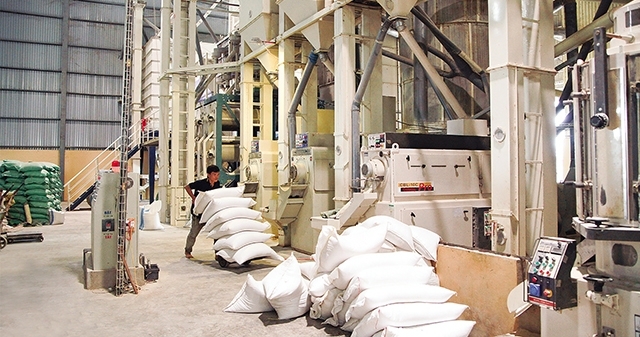[ad_1]
New elements added to the Comprehensive and Progressive Agreement for Trans-Pacific Partnership (CPTPP) based on the original Trans-Pacific Partnership (TPP), have turned the CPTPP into a multilateral agreement that not only concerns trade and market issues but also creates the motivation for comprehensive reform in both legal and governance issues.

Vietnam is among countries to benefit most from the CPTPP but the country will also have to face many challenges
Comprehensive and progressive partners
The two words ‘comprehensive’ and ‘progressive’ which have been supplemented to the CPTPP, the new version of the TPP, express the determination to revive the TPP and the negotiation efforts of the 11 CPTPP member countries. The new trade pact has been hailed as a prominent and iconic success in the efforts to promote multilateral trade and anti-protectionism.
Less than a year after the signing of the original TPP in February 2016 (which included 12 member countries and accounted for 40% of the global GDP), the TPP was teetering on the edge of bankruptcy following US President Donald Trump’s unexpected decision to withdraw the US from the multilateral trade pact.
It can’t be denied that the US’s withdrawal has made the TPP less attractive. Without the US, TPP-11 only accounts for 13.5% of the global GDP and many of the TPP member countries have become less motivated to participate in the trade pact, as they had placed too much expectation on the market of the world’s leading economy.
However, strong determination to avoid the risk of a breakdown of the TPP has connected the efforts of the remaining 11 members with the leading role of Japan and New Zealand, two countries that have ratified the TPP.
The last-minute success of TPP, after the marathon talks at the APEC Week in Da Nang last week, not only revived the TPP but also created a new, comprehensive and progressive face for the TPP.
The statement from the ministers of the 11 CPTPP member countries affirmed that the new version of the TPP will be a comprehensive, high-quality, and soon to be effective trade pact.
Inheriting the progressive contents from the original pact, the CPTPP basically preserves the high standards and balance of the TPP, while emphasising the comprehensiveness and progress of the new version which ensures the interests of all stakeholders. The new deal will also preserve the control rights and flexibility in setting the legal and management priorities, as well as ensuring the right to protect, develop and implement specific cultural policies of each member.
The CPTPP temporarily suspends 20 provisions stipulated in the original deal and supplements a list of issues needing further negotiations, which is considered as a solution to deal with the standstill in negotiations and ensure that the pact will soon come into force.
The CPTPP will enter into force after at least six countries ratify it. This is a positive change compared to the previous provision, which regulated that to take effect the deal would have to be ratified by countries that account for 85% of the group’s total GDP. These are favourable factors which are expected to help the negotiation process get back on the right track.
Not just commerce
The parties involved confirmed that the latest CPTPP was not merely a name change or just a difference in the number of members. The members reached a consensus on the need to maintain high-quality and comprehensive agreements in all areas, but not solely focusing on market openness, or commercial and economic issues.
According to the Vietnamese Minister of Industry and Trade Tran Tuan Anh, both the TPP and the new version, CPTPP, will create opportunities in parallel with presenting challenges. These trade pacts are new generation trade agreements with very high standards, requiring a number of reforms in many areas, including in the viewpoint, as well as legal and administrative issues.
These requirements will create motivation for both economic and social development. In fact, high standards related to institutional issues will help to improve the quality of State governance, legal framework, competitiveness, and the investment and business environment.
Accurate assessments on the impacts of the CPTPP on the member states, and on the global economy and trade, will only be given after the negotiations on the 20 ‘suspended’ provisions, which mainly concern intellectual property issues, conclude. According to experts, in terms of inherited contents from the original version, Vietnam is still ranked among the countries to benefit most from the new deal, while also having to deal with considerable challenges, particularly competitiveness.
Stewart Beck, President and CEO of the Asia-Pacific Foundation of Canada said that the CPTPP will enable the Vietnamese economy to integrate deeper into the world trade system. The current economic growth in Vietnam is partly due to global market access, thus, anything that helps to reduce trade barriers is important to Vietnam and the CPTPP aims at this, Stewart Beck noted.
Some experts say that the CPTPP without the US may be a disadvantage for Vietnam. As the US market now accounts for more than 22% of Vietnam’s total export revenue and Vietnamese enterprises have placed high expectations on the TPP to generate favourable conditions for conducting business in the US market. However, the vast market of the CPTPP without the US remains crucial to Vietnam, as Japan, the bloc’s largest member, has a good relationship with Vietnam, although it is not the country of highest market share for Vietnamese enterprises.
The consensus on the CPTPP was the common success of the 11 member economies and at the same time expressed the imprints of the host Vietnam on the APEC Vietnam Year 2017. However, this is only the beginning of a long road ahead, requiring the compromise and balance of interests of all parties, in order to produce a comprehensive and progressive agreement between the partners in the Pacific region.
Nhan Dan
[ad_2]
Source link
